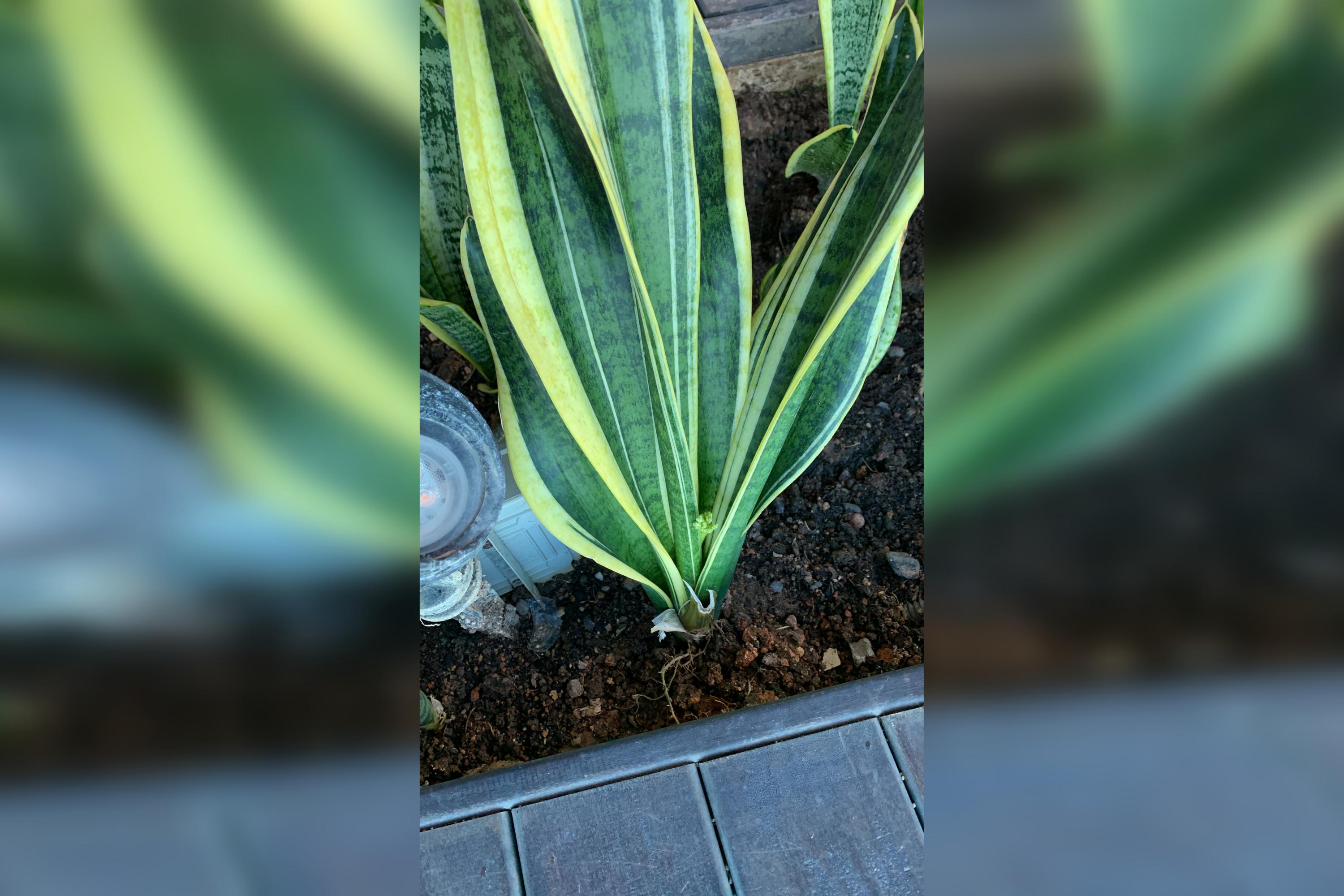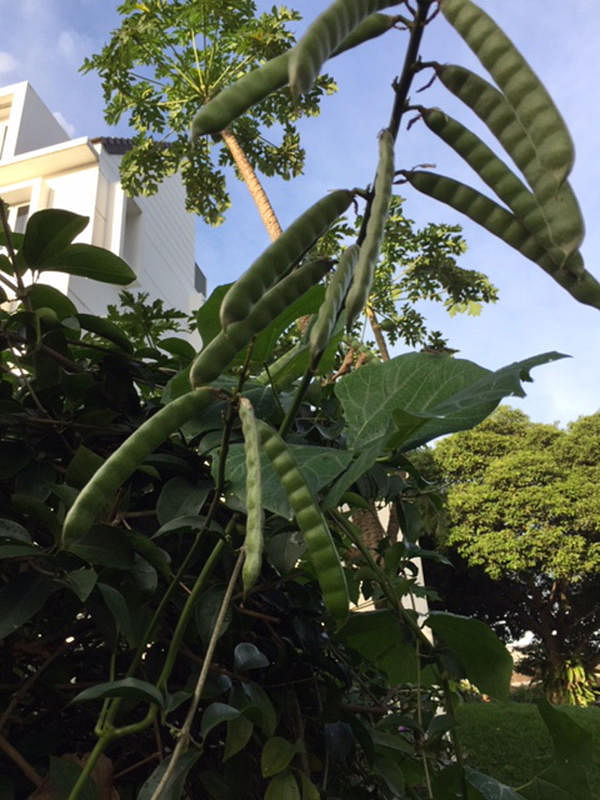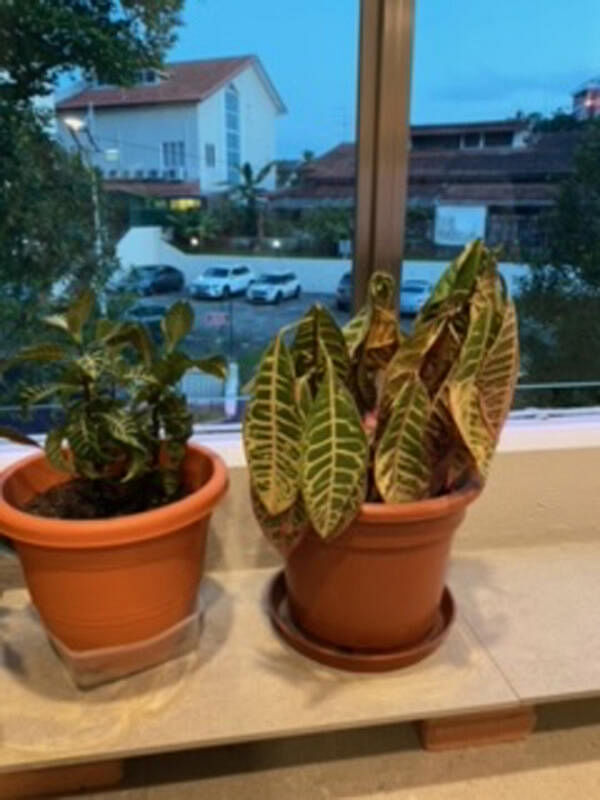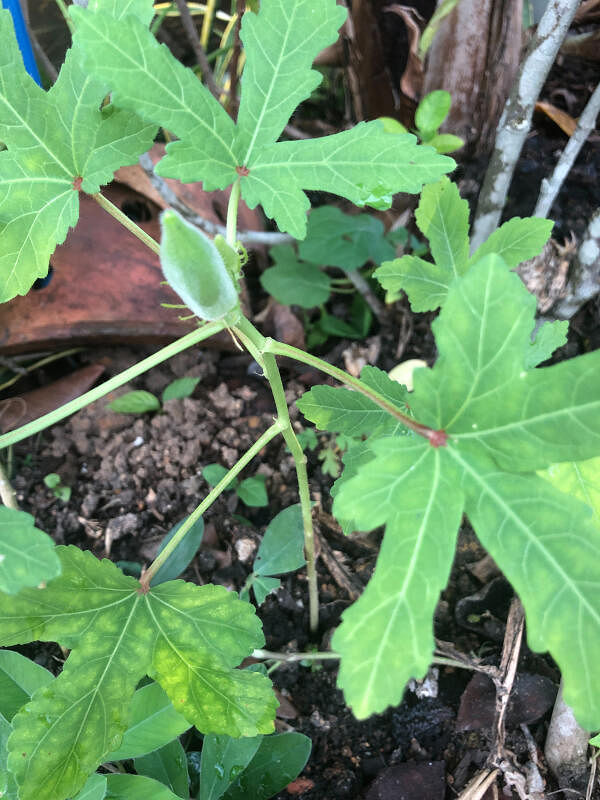Root Awakening: Curry Tree infested with sucking insects; mother-in-law's tongue is flowering
Sign up now: Get ST's newsletters delivered to your inbox

Dracaena trifasciata and is commonly known as snake plant and mother-in-law's tongue.
PHOTO: JULIA SEAH
Wilson Wong
Follow topic:
Mother-in-law's tongue is flowering
Is that a flower sprouting from the plant? What colour will the bloom be and how big will it grow?
Julia Seah
The plant is botanically known as Dracaena trifasciata and is commonly known as snake plant and mother-in-law's tongue. The inflorescence is emerging from the centre of the plant and will grow to a height slightly taller or similar to the tip of the leaves. The flowers are white and scented.
Only swollen tap root of yam bean is edible

I grew a plant I thought was turnip in my garden, but this appeared instead. What is it and are the beans edible?
Frances Cheang
The plant is the yam bean or more commonly called "bang kuang". Its botanical name is Pachyrhizus erosus.
Its swollen tap root is a well-known ingredient that is used to make the filling for popiah and kueh pie tee.
Do note that only the swollen tap root is edible. The rest of the plant is reported to be toxic and should not be used for food.
Garden croton is wilted

I bought my plant two months ago and it was growing well. I water it once every three to four days, as instructed by the seller. It is placed near the terrace and gets a few hours of sunlight a day. However, it seems unhealthy. My other plant is drying out and the leaves have turned brown. What should I do?
Michael Lee
Your plants are the zebra plant (Aphelandra squarrosa, left) and the garden croton (Codiaeum variegatum, right).
It is unclear from the picture the issues affecting the zebra plant.
The garden croton, on the other hand, appears to have wilted. The most common cause is lack of water.
The frequency of watering depends on a variety of factors. These include the prevailing environmental conditions such as the intensity and duration of sunlight exposure and the soil type and properties. As such, you should check for moisture by inserting your finger into the soil.
If the soil feels dry, you should water your plant thoroughly. Allowing your plant to wilt and dry out is detrimental to its health as the roots will first be damaged, followed by the rest of the plant.
It is recommended you monitor the plants' water needs and the duration required for the soil to dry out slightly, so that you can establish the watering frequency.
Lady's finger plant is best grown under full sun and with a large root space

I grew lady's finger plants from seeds harvested from dried pods. After the seeds sprouted into young plants about 12cm tall in pots, I transplanted them into the ground. One of the plants is dwarfed, but it flowered and bore fruit. What should I do to encourage it to grow more normally?
Alex Quek
Your lady's finger plant (Abelmoschus esculentus) is dwarfed due to a number of reasons.
Note that this plant species needs to be grown under direct sunlight for at least six hours daily. It is also a plant that needs to have a large root space to grow well.
A plant grown in a pot or in compacted soil will lack vigour. Fertile soil and regular feeding of fertiliser will improve plant vigour.
Hence, it is best to grow this plant in an outdoor garden in the ground or in a large raised bed.
It may be a little too late to improve the situation now. Consider starting a new crop with the factors mentioned earlier to ensure you get larger and more robust plants that will likely produce a more fruitful harvest.
Curry Tree infested with sucking insects
My curry plant was growing quite healthily after I pruned it extensively. But its leaves seem to be having lots of spots. I checked the plant and could not see mites or insects. What can I do and are the leaves still edible?
S.H. Tay
It appears that your Curry Tree (Murraya koenigii) has been infested with the young of the citrus blackfly, a very common pest for this species. The pests at this particular life stage suck sap from the leaf tissue.
Early detection and intervention are required to provide adequate control over them.
You can use summer oil, an environment-friendly pesticide that is commonly sold in local nurseries, to manage the pest population.
It works by suffocating the pests, hence thorough coverage on all parts of the plant is required. Repeated applications may also be needed to ensure all subsequent young of the pests are eradicated.
While infested leaves are still edible after the pests have been removed, they may not look palatable.
* Answers by Dr Wilson Wong, an NParks-certified practising horticulturist, parks manager and ISA-certified arborist. He is the founder of Green Culture Singapore and an adjunct assistant professor (Food Science & Technology) at the National University of Singapore.
* Have a gardening query? E-mail it with clear, high-resolution pictures of at least 1MB, if any, and your full name to stlife@sph.com.sg. We reserve the right to edit and reject questions.

